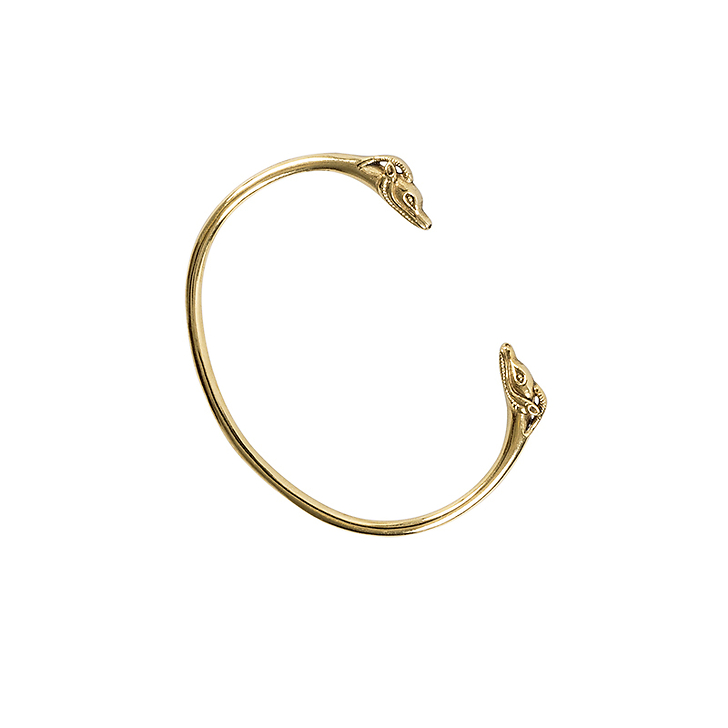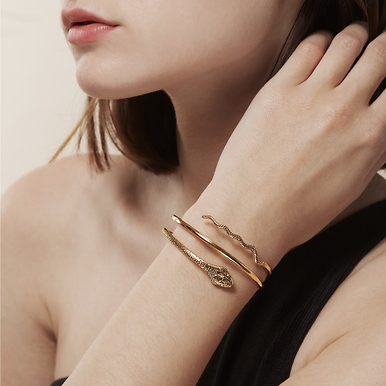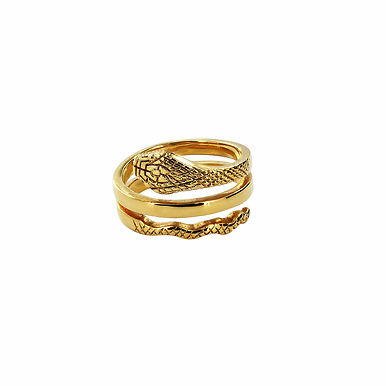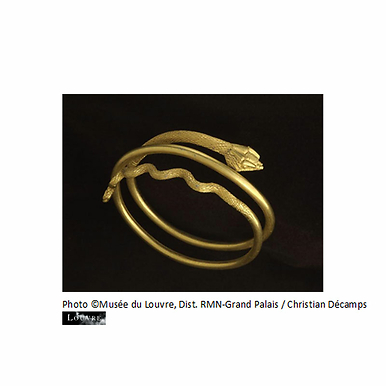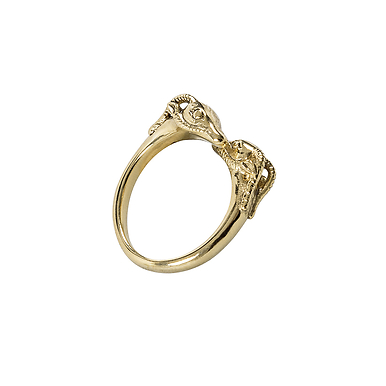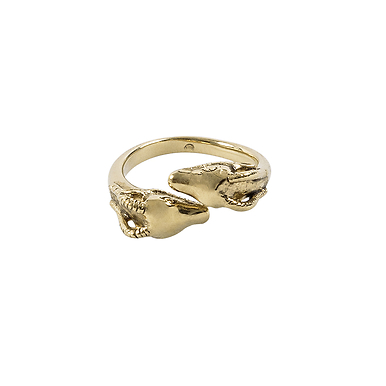Bangle bracelet Ibex
BB000215
The smooth cane ends in two ibexes facing each other, with morphological features portrayed in fine chasing.
During the Hellenistic period, many bracelets of this type, their extremities embellished with heads of animals, existed in the Greek world. A wide variety of species were represented, including...
Read more
The smooth cane ends in two ibexes facing each other, with morphological features portrayed in fine chasing.
During the Hellenistic period, many bracelets of this type, their extremities embellished with heads of animals, existed in the Greek world. A wide variety of species were represented, including lions, rams, goats, calves, lynxes and griffins. This example, discovered in Syria, is similar to Achaemenid production.
The Louvre bracelet is part of the collection of Louis de Clercq, a passionate archaeologist who built up a magnificent collection of antiquities at the end of the 19th century, composed of objects from the Eastern Mediterranean, including some remarkable pieces of jewellery.
Close
Login to see prices
Sold by GrandPalaisRmn

